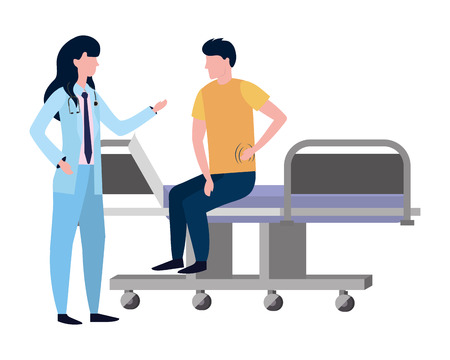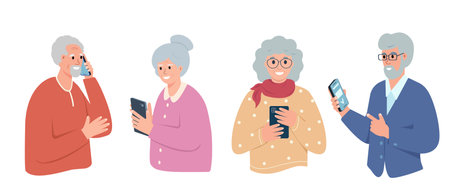Understanding the Role of Families and Caregivers in Assistive Technology Adoption
When it comes to helping people live more independently with the support of assistive technology, families and caregivers play a crucial role. In the United States, occupational therapists often partner closely with families and caregivers to find, select, and use devices that make daily life easier for loved ones. Their involvement is not only helpful—it is essential for long-term success.
Why Family and Caregiver Involvement Matters
Families and caregivers are on the front lines. They see firsthand what their loved one needs at home, school, or work. This gives them unique insights into daily routines, challenges, and what might work best. Occupational therapists rely on this knowledge to recommend the most suitable assistive technology.
| Role | How Families & Caregivers Help | Impact on Assistive Technology Use |
|---|---|---|
| Daily Support | Help set up and maintain devices; encourage regular use | Improves consistency and comfort with technology |
| Personal Insight | Share details about daily habits, strengths, and needs | Makes device selection more personalized |
| Problem-Solving | Identify issues as they come up; brainstorm solutions with therapists | Keeps technology working effectively over time |
| Advocacy | Speak up for needed changes or new technology as needs change | Ensures continued support and access to resources |
The American Context: Unique Considerations
In the U.S., families often juggle busy schedules, work commitments, and sometimes multiple caregiving roles. Understanding insurance coverage, navigating educational or healthcare systems, and advocating for a loved one can be complex. That’s why occupational therapists focus on building strong partnerships with families—so everyone is on the same page when it comes to goals, expectations, and how technology fits into real life.
Examples of Everyday Support from Families and Caregivers:
- Troubleshooting device problems at home before calling for help
- Reminding loved ones to use their devices throughout the day
- Sharing feedback with therapists about what’s working or not working in real-world situations
- Helping update or upgrade devices as needs change over time
The Takeaway: Family Involvement Is Key to Success
No matter the type of assistive technology—whether it’s a communication device, mobility aid, or something else—the ongoing support from families and caregivers makes a big difference. Their daily involvement helps ensure that technology truly enhances independence and quality of life. In occupational therapy practice across America, working together as a team leads to better outcomes for everyone involved.
2. Effective Communication Strategies with Families and Caregivers
Clear, Empathetic, and Culturally Sensitive Communication
When occupational therapists work with families and caregivers to adopt assistive technology, clear and empathetic communication is key. In the United States, best practices include using language that is easy to understand, actively listening to concerns, and respecting each family’s unique cultural background. This helps build trust and ensures everyone is on the same page.
Best Practices for Communication
| Strategy | Description | Common U.S. Methods |
|---|---|---|
| Team Meetings | Regular meetings with the family, caregivers, and professionals to discuss progress and challenges. | IEP (Individualized Education Program) meetings in schools, case conferences in clinics |
| Digital Updates | Sharing updates through emails, secure messaging apps, or digital platforms for convenience and timely information. | Email check-ins, patient portals like MyChart, text message reminders |
| Collaborative Goal-Setting Sessions | Setting goals together to ensure they are meaningful for both the individual and their support network. | Family-centered planning sessions, shared decision-making tools |
| Culturally Sensitive Language | Acknowledging cultural preferences and using language that respects family values and traditions. | Bilingual materials, interpreters during meetings when needed |
| Empathetic Listening | Taking time to listen without judgment to concerns or suggestions from families and caregivers. | Open-ended questions during appointments, reflective listening techniques |
Tips for Building Strong Communication Channels
- Be proactive: Reach out regularly instead of waiting for problems to arise.
- Use plain language: Avoid medical jargon so everyone can understand the information.
- Respect schedules: Offer flexible meeting times or virtual options to accommodate busy families.
- Encourage feedback: Ask families how they prefer to receive updates or if they need more support.
- Cultural awareness: Learn about the family’s background to better tailor communication styles and materials.
Example: Digital Update Workflow
| Step | Description |
|---|---|
| Email summary after session | A brief recap sent within 24 hours outlining what was discussed and next steps. |
| Secure photo/video sharing (with consent) | Sends visual progress reports showing assistive technology use at home or school. |
| Monthly check-in call or video chat | An opportunity for families to ask questions or share observations outside of regular appointments. |
The goal is to make sure families feel heard, included, and supported throughout the process of adopting assistive technology. Consistent and thoughtful communication leads to better outcomes for everyone involved.

3. Assessing and Matching Assistive Technology to Client and Family Needs
Understanding the Client’s Unique Needs
In occupational therapy, a key step in helping families and caregivers adopt assistive technology is understanding the specific needs of each client. This means looking at what daily activities are challenging, what goals the client wants to achieve, and how their environment at home or school impacts their participation. Occupational therapists (OTs) often use interviews, observation, and standardized assessments to gather this information. By talking with both the individual and their family, OTs can get a clear picture of what works—and what doesn’t—in daily life.
Considering Family Routines and American Lifestyles
Assistive technology must fit smoothly into everyday routines to be effective. In many American households, daily schedules can be busy and fast-paced. OTs work closely with families to understand when and where support is needed most—whether it’s getting ready for school in the morning, managing mealtimes, or participating in community activities. The goal is to choose tools that not only meet the user’s needs but also complement the family’s lifestyle without adding extra stress.
Key Areas OTs Evaluate:
| Area | Questions OTs Ask | Examples of Assistive Tech |
|---|---|---|
| Self-Care | What daily tasks are hard? How much help is needed? | Adaptive utensils, dressing aids |
| Mobility | How does the person move around the house or community? | Wheelchairs, walkers, transfer boards |
| Communication | Are there challenges with speaking or understanding? | Speech apps, communication boards |
| Learning & Play | What activities does the person enjoy? Are there barriers? | Switch-activated toys, accessible tablets |
| Household Tasks | Is it hard to cook, clean, or manage medication? | Medication reminders, adapted kitchen tools |
The Collaborative Process: Family as Partners
A successful match between technology and user starts with collaboration. OTs invite families and caregivers to share their insights about routines, preferences, and any concerns about new devices. This teamwork helps make sure that chosen technologies are practical for everyday use—like selecting a speech device that’s easy to bring along during soccer practice or picking kitchen gadgets that help teens become more independent during after-school snack time.
Tips for Fitting Technology into Daily Life:
- Start simple: Begin with easy-to-use devices before moving on to more complex options.
- Practice together: Use real-life situations—like making breakfast or doing homework—to build confidence.
- Create routines: Integrate device use into regular parts of the day for smoother adoption.
- Be flexible: Adjust as needed if something isn’t working well for the family.
- Cultural fit: Consider language preferences and traditions common in American households.
The OT’s Role in Long-Term Success
An occupational therapist does more than just recommend equipment—they provide ongoing support as families learn how to use new tools. They check in regularly to see how things are going at home or school, make adjustments if needed, and celebrate progress along the way. By keeping open communication with families and caregivers, OTs help ensure that assistive technology truly supports participation in meaningful activities while fitting naturally into American lifestyles.
4. Building Family Confidence and Skills Through Training and Support
Empowering Families and Caregivers
Occupational therapists (OTs) play a vital role in helping families and caregivers feel confident using assistive technology (AT) at home and in the community. By working closely with families, OTs can make the process less overwhelming and more successful for everyone involved.
Practical Training
OTs provide hands-on training to families and caregivers. This training is tailored to each familys needs, making sure everyone understands how to use the AT devices safely and effectively. For example, OTs might show parents how to set up a communication device or teach a grandparent how to use adaptive kitchen tools.
| Training Focus | Examples | Benefits |
|---|---|---|
| Device Setup | Step-by-step demonstrations on turning on/off, charging, or adjusting settings | Reduces frustration and increases independence |
| Daily Use | Practicing using devices during meals, homework, or outings | Makes AT a natural part of daily life |
| Troubleshooting | What to do if a device won’t work or needs repair | Promotes quick problem-solving and less downtime |
Troubleshooting Assistance
Mistakes happen—even with the best technology! OTs teach families basic troubleshooting skills, such as checking batteries or restarting a device. They also offer guidance on when it’s time to call for professional help. This support helps families feel prepared instead of stressed when issues arise.
Common Troubleshooting Tips Shared by OTs:
- Check all connections and cords
- Make sure batteries are charged or replaced regularly
- Refer to user manuals for error messages
- Create a simple checklist for quick fixes at home
- Know who to contact for technical support if needed
Ongoing Resources for Success
The journey doesn’t end after initial training. OTs connect families with ongoing resources, such as:
- User guides and video tutorials: Easy-to-follow instructions for reference anytime
- Support groups: Meeting other families using similar technology can offer encouragement and tips from real-life experiences
- Community programs: Information about inclusive activities where AT can be used outside the home, like local libraries or recreation centers
- Follow-up appointments: Scheduled check-ins with the OT to review progress and make adjustments as needed
Summary Table: How OTs Support Families with Assistive Technology Adoption
| Support Type | Description |
|---|---|
| Hands-On Training | Step-by-step practice using devices in real-life situations |
| Troubleshooting Guidance | Tips for solving common problems independently |
| Resource Sharing | User guides, videos, and peer support networks |
| Sustained Communication | Email/phone support and regular follow-ups with the OT |
| Connecting with Community | Finding inclusive programs and activities locally |
This approach ensures that families not only learn how to use assistive technology but also feel supported every step of the way—making everyday life smoother, more independent, and more enjoyable for everyone involved.
5. Collaborative Problem-Solving and Sustaining Long-Term Success
Building a Team Approach with Families and Caregivers
In occupational therapy, helping families and caregivers work together with professionals is key to making sure assistive technology truly benefits the user. This team approach encourages open communication, shared decision-making, and ongoing support. Here’s how you can build and maintain strong collaboration:
- Regular Check-ins: Schedule routine meetings—these can be in person, over the phone, or via video calls—to discuss progress and concerns.
- Clear Communication Channels: Use simple language, avoid jargon, and encourage families to ask questions or share observations anytime.
- Shared Goals: Work together to set realistic goals that reflect the family’s needs and values.
Proactive Strategies for Addressing Challenges
Challenges are normal when introducing new technology. Being proactive helps prevent bigger issues down the road. Here are some best practices for addressing challenges as a team:
| Challenge | Proactive Strategy | Who’s Involved? |
|---|---|---|
| Lack of confidence using the device | Offer hands-on training sessions and easy-to-follow guides | Therapist, Family/Caregiver |
| Device not fitting daily routines | Customize use plans together; adjust schedules as needed | User, Family, Therapist |
| Technical issues with equipment | Create a troubleshooting checklist; provide contact info for tech support | Caretaker, Therapist, Tech Support |
| User resistance or frustration | Listen to feedback, validate feelings, make small changes gradually | User, Family, Therapist |
Integrating Family Feedback for Better Outcomes
Family members and caregivers know the user best. Their ongoing feedback is crucial for long-term success with assistive technology. Here’s how occupational therapists can make sure this feedback shapes care:
- Create Feedback Loops: Set up easy ways for families to share what’s working—and what isn’t—such as quick surveys or journals.
- Adjust Plans Together: Revisit goals regularly based on new insights or changes at home or school.
- Celebrate Wins: Acknowledge successes—big or small—to boost confidence and motivation for everyone involved.
Sustaining Success Over Time
Sustainability means ensuring that assistive technology keeps meeting the user’s needs as they grow or as life circumstances change. Occupational therapists support this by:
- Offering Ongoing Training: Provide refresher sessions for families and caregivers as needed.
- Keeping Resources Updated: Share information about new tools or upgrades that might help.
- Encouraging Peer Support: Connect families with local support groups or online communities where they can learn from each other’s experiences.
The Value of Long-Term Collaboration
A collaborative approach that brings together therapists, families, and caregivers helps overcome challenges early, supports positive outcomes, and ensures that assistive technology continues to make a difference in everyday life. By maintaining open communication and valuing everyone’s input, we can help users thrive—not just today but well into the future.


